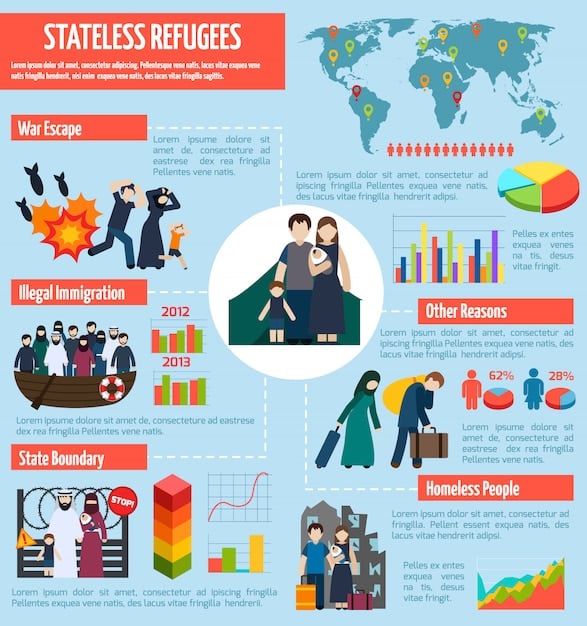US Military Launches New Initiative to Combat Sexual Assault

The U.S. Military has launched a comprehensive new initiative aimed at combating sexual assault within its ranks, focusing on prevention, response, and accountability to create a safer and more respectful environment for all service members.
The U.S. Military is taking aggressive steps to confront the pervasive issue of sexual assault. A new initiative has been launched that aims to overhaul existing prevention and response systems, signaling a firm commitment to fostering a culture of respect and accountability within the armed forces.
Understanding the Scope of Sexual Assault in the US Military
Sexual assault within the U.S. Military has been a long-standing and deeply troubling issue. Understanding the extent of the problem is the first step toward implementing effective solutions. This section delves into the data and statistics that highlight the prevalence of sexual assault in the armed forces.
Recent reports and studies reveal that sexual assault continues to impact service members across all branches. The numbers are not just statistics, they represent real people whose lives have been irrevocably affected.
Key Statistics on Sexual Assault in the Military
The Department of Defense (DoD) publishes annual reports on sexual assault in the military, providing crucial data on the incidence rates and characteristics of these crimes. Here are some key statistics:
- Prevalence Rates: A significant percentage of service members report experiencing unwanted sexual contact, with rates varying by gender and branch of service.
- Reporting Rates: Many incidents of sexual assault go unreported due to fear of retaliation, lack of trust in the system, and concerns about career impact.
- Investigation Outcomes: A relatively low percentage of reported cases result in convictions, underscoring the challenges in prosecuting these crimes within the military justice system.
These statistics paint a concerning picture of the challenges the military faces in addressing sexual assault. Efforts to improve prevention, response, and accountability are essential to changing this reality.
The high prevalence and low reporting rates indicate a need for a more supportive and trusting environment. By acknowledging the scope of the problem, the military can work towards creating a culture that prioritizes the safety and well-being of all service members.

The Core Elements of the New Initiative
The new initiative launched by the U.S. Military to combat sexual assault in the ranks is built on several core elements. These elements are designed to create a comprehensive and integrated approach to prevention, response, and accountability.
The initiative aims to overhaul the existing systems and instill a culture of respect and safety. Here are the central components:
Prevention Strategies
Prevention is a key focus of the new initiative. The military aims to stop sexual assault from happening in the first place through education, training, and awareness programs.
- Enhanced Training Programs: Comprehensive training programs that educate service members on consent, bystander intervention, and the importance of respect and inclusivity.
- Awareness Campaigns: Targeted campaigns to raise awareness about sexual assault and promote a culture of prevention within the military community.
- Leadership Engagement: Encouraging leaders at all levels to actively engage in prevention efforts and foster a climate of accountability.
Response and Support
The initiative seeks to improve the response to sexual assault incidents and provide better support to survivors. This includes enhancing reporting mechanisms, ensuring access to medical and mental health care, and offering legal assistance.
The goal is to create a system that is responsive, compassionate, and supportive of those who have experienced sexual assault.
Accountability Measures
Holding offenders accountable is critical to deterring future incidents of sexual assault. The initiative aims to strengthen the military justice system and ensure that perpetrators are brought to justice.
- Improved Investigation Processes: Streamlining investigation processes to ensure thorough and impartial investigations of sexual assault allegations.
- Independent Review: Establishing independent review mechanisms to oversee investigations and ensure fairness and transparency.
- Command Accountability: Holding commanders accountable for creating a safe and respectful environment within their units.
By focusing on prevention, response, and accountability, the new initiative seeks to create a comprehensive approach to combating sexual assault in the U.S. Military.
It’s a multi-faceted strategy that relies on changing attitudes, improving systems, and holding individuals accountable to create a safer military community.
Challenges in Implementing the Initiative
While the new initiative represents a significant step forward, there are several challenges to its successful implementation. Overcoming these challenges will be essential to achieving the initiative’s goals and creating lasting change within the U.S. Military.
Some of the key challenges include cultural resistance, systemic barriers, and resource constraints.
Cultural Resistance
Changing deeply ingrained attitudes and behaviors within the military culture is a significant hurdle. Some service members may resist new policies and training programs, viewing them as unnecessary or intrusive.
Overcoming this resistance requires a concerted effort to educate and engage service members at all levels. It’s about demonstrating that these changes are essential to maintaining a strong and effective fighting force.
Leadership plays a crucial role in shaping the culture and setting the tone for respectful and inclusive behavior. When leaders actively promote and support the initiative, it sends a powerful message that these changes are taken seriously.
Systemic Barriers
The military justice system has been criticized for its handling of sexual assault cases. Issues such as command influence, lack of independence, and inadequate training for investigators and prosecutors can undermine the fairness and effectiveness of the system.
- Addressing Command Influence: Implementing measures to reduce the potential for command influence in sexual assault investigations and prosecutions.
- Ensuring Independence: Establishing independent investigative and prosecutorial bodies to handle sexual assault cases.
- Improving Training: Providing specialized training to investigators, prosecutors, and judges on sexual assault dynamics and trauma-informed practices.
Overcoming these systemic barriers requires a commitment to transparency, accountability, and reform. It’s about creating a system that is fair, impartial, and responsive to the needs of survivors.

Resource Constraints
Implementing comprehensive prevention and response programs requires significant resources. Adequate funding, staffing, and infrastructure are essential to supporting the initiative’s goals.
Budget limitations, personnel shortages, and competing priorities can hinder the effective implementation of these programs. It’s important to prioritize resources for sexual assault prevention and response to ensure that the initiative can achieve its full potential.
Investing in training, technology, and support services can help to strengthen the military’s ability to prevent and respond to sexual assault. This investment is not only a matter of justice but also a strategic imperative for maintaining a healthy and effective fighting force.
By addressing these challenges head-on, the U.S. Military can increase the likelihood of success in combating sexual assault and creating a safer and more respectful environment for all service members.
It’s a long and difficult road, but by facing these obstacles with determination and resolve, the military can make significant progress toward achieving its goals.
The Role of Leadership in Preventing Sexual Assault
Leadership at all levels within the U.S. Military plays a crucial role in preventing sexual assault and fostering a culture of respect and accountability. Leaders are responsible for setting the tone within their units and ensuring that all service members are treated with dignity and respect.
Effective leadership is essential for creating a safe and inclusive environment where sexual assault is not tolerated.
Setting the Standard
Leaders must set the standard for behavior within their units. This includes clearly communicating expectations for respectful conduct, enforcing policies against sexual assault and harassment, and holding offenders accountable.
When leaders consistently demonstrate a commitment to these values, it sends a powerful message to all service members. It creates a climate where respectful behavior is valued and sexual assault is not tolerated.
Promoting a Culture of Respect
Leaders can promote a culture of respect by fostering open communication, encouraging bystander intervention, and creating opportunities for team-building and camaraderie.
When service members feel valued and respected, they are more likely to report incidents of sexual assault and support those who have been victimized.
- Fostering Open Communication: Leaders should encourage open communication within their units, creating a safe space for service members to voice concerns and report incidents of sexual assault.
- Encouraging Bystander Intervention: Leaders should promote bystander intervention, empowering service members to step in and stop potential incidents of sexual assault.
- Creating Team-Building Opportunities: Leaders should create opportunities for team-building and camaraderie, strengthening relationships and fostering a sense of community within their units.
Supporting Survivors
Leaders have a responsibility to support survivors of sexual assault. This includes providing access to medical and mental health care, offering legal assistance, and ensuring that survivors are treated with dignity and respect.
When leaders demonstrate compassion and support for survivors, it sends a message that the military cares about their well-being and is committed to helping them recover.
Leadership is not just about giving orders, it’s about creating a positive and supportive environment where all service members can thrive. By prioritizing respect, accountability, and support, leaders can play a vital role in preventing sexual assault and ensuring the safety and well-being of their troops.
Effective leadership is essential to creating a military culture that is free from sexual assault and harassment. It’s about putting the needs of service members first and ensuring that they are treated with the dignity and respect they deserve.
The Impact of Sexual Assault on Military Readiness
Sexual assault has a significant impact on military readiness, undermining the effectiveness and cohesion of units. It can lead to decreased morale, impaired performance, and increased attrition rates. Addressing sexual assault is therefore not only a matter of justice but also a strategic imperative for maintaining a strong and capable fighting force.
The impact of sexual assault extends beyond individual service members and affects the entire military community.
Decreased Morale
Sexual assault can create a climate of fear and mistrust within units, leading to decreased morale and job satisfaction. Service members may feel unsafe and unsupported, which can erode their commitment to the military.
Addressing sexual assault is essential to restoring morale and creating a positive work environment. When service members feel safe and respected, they are more likely to be motivated and engaged in their duties.
Impaired Performance
Survivors of sexual assault may experience emotional distress, post-traumatic stress disorder (PTSD), and other mental health issues that can impair their ability to perform their duties effectively. They may have difficulty concentrating, making decisions, and working with others.
Providing access to medical and mental health care is essential to helping survivors recover from the trauma of sexual assault and regain their full potential. Treatment can help them manage their symptoms and develop coping strategies.
Future Directions and Recommendations
Combating sexual assault in the U.S. Military requires a sustained and comprehensive effort. While the new initiative represents a positive step forward, there is still much work to be done. This section outlines some future directions and recommendations for further strengthening the military’s prevention and response efforts.
Continuous improvement and innovation are essential to achieving lasting change.
Strengthening Prevention Programs
Prevention programs should be continuously evaluated and improved to ensure that they are effective in reducing the incidence of sexual assault. This includes incorporating best practices from civilian organizations and tailoring programs to the specific needs of different military populations.
Investing in research to identify the most effective prevention strategies is also crucial. This research can help to inform the development of evidence-based programs that are more likely to succeed.
- Implementing Comprehensive Education Programs: Expanding education programs to cover topics such as consent, bystander intervention, and the impact of trauma.
- Engaging Men in Prevention Efforts: Actively involving men in prevention efforts to challenge harmful gender stereotypes and promote respectful behavior.
- Utilizing Technology: Leveraging technology to deliver prevention messages and provide resources to service members.
| Key Point | Brief Description |
|---|---|
| 🛡️ New Initiative Goals | Aims to combat sexual assault through prevention, support, and accountability. |
| 💡 Leadership’s Role | Critical in fostering respect and setting standards within military units. |
| ⚖️ Accountability Issues | Strengthening the military justice system and improving investigation processes. |
Frequently Asked Questions
▼
The new initiative’s main goal is to reduce and ultimately eliminate sexual assault within the U.S. Military by focusing on prevention, improving support for survivors, and ensuring accountability for offenders.
▼
This initiative takes a more holistic approach by integrating comprehensive training, independent review mechanisms, and enhanced support systems, addressing both the systemic and cultural factors contributing to sexual assault.
▼
Survivors are provided with access to medical care, mental health services, legal assistance, and advocacy support to help them navigate the reporting process and recover from their experiences.
▼
Accountability measures include streamlining investigation processes, establishing independent review mechanisms, and holding commanders responsible for fostering a safe and respectful environment within their units.
▼
Military leaders are expected to set a positive example, promote a culture of respect, enforce policies against sexual assault, and ensure that all service members are treated with dignity and respect.
Conclusion
The U.S. Military’s new initiative to combat sexual assault in the ranks signals a determined effort to address a long-standing and critical issue. By focusing on prevention, response, and accountability, the initiative aims to create a safer and more respectful environment for all service members, ultimately enhancing military readiness and cohesion.





